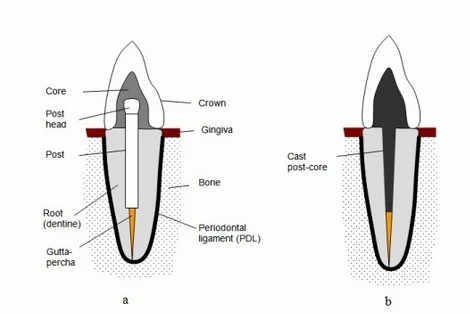Hello dentists! I just underwent root canal retreatment for my molar 46. I want your professional opinion on what's the best restoration option for my case (resin, amalgam, inlay, onlay, crown, or any other).
By best, I mean the most conservative and durable one. From what I've read (I'm no dentist), I'm considering an amalgam, taking into account its durability, conservativeness and the big hole (sorry for the non-technical term) in my tooth. I understand the amalgam is better vs. the resin in cases such as this, but I'm not so clear on why not choosing the other options, so far I'm preferring the amalgam for the sake of conservativeness, but I'm here to reach out to you guys, to see if you can change my mind. I also understand (not completely) the state of the cusps has something to do with it.
Thanks in advance.
John.
Edit: I just found out gold fillings exist, now I think that'd be my best choice. What do you think?


By best, I mean the most conservative and durable one. From what I've read (I'm no dentist), I'm considering an amalgam, taking into account its durability, conservativeness and the big hole (sorry for the non-technical term) in my tooth. I understand the amalgam is better vs. the resin in cases such as this, but I'm not so clear on why not choosing the other options, so far I'm preferring the amalgam for the sake of conservativeness, but I'm here to reach out to you guys, to see if you can change my mind. I also understand (not completely) the state of the cusps has something to do with it.
Thanks in advance.
John.
Edit: I just found out gold fillings exist, now I think that'd be my best choice. What do you think?
Last edited by a moderator:

